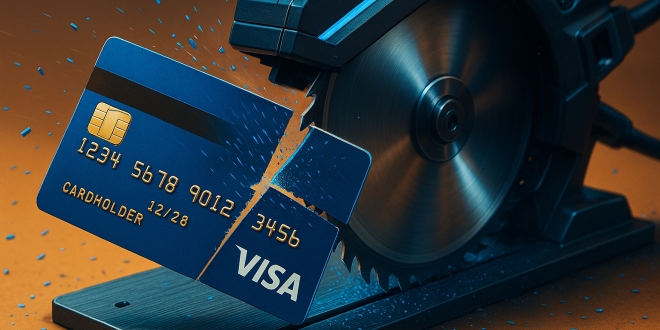By John Toman, Co-founder & Chief Product Officer, Pivot Payables
A time may soon come when future generations won’t recognize physical credit cards because they’ve become obsolete. The path to their decline is already underway, as more consumers adopt contactless payments for their speed, convenience and security.
Consider Gen Z consumers, who grew up with smartphones and smartwatches. They expect to use these devices for everyday tasks, including in-person payments via digital wallets. Along with millennials, they are leading the shift away from physical wallets in favor of digital alternatives, thanks to their comfort with mobile technology and preference for seamless transactions.
Contactless Has Become the Default
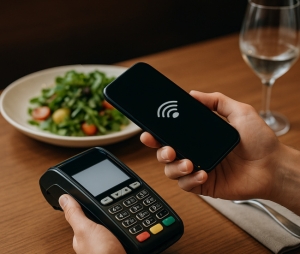
Contactless payments are no longer an optional feature. They are the default in many markets. On Mastercard’s network, more than two of every three in-person purchases are now contactless. In the US, seven in 10 consumers used a mobile phone to pay at least once in the past year, and the share of payments made via mobile rose from 28% to 32% in just 12 months, according to the Federal Reserve Bank of Atlanta’s report “2024 Survey and Diary of Consumer Payment Choice.”
Consumers now expect the speed and ease of tapping a phone or watch, and they rarely look back once the behavior takes hold. The lesson is unmistakable: Consumer adoption drives merchant behavior. Retailers that fail to support digital payments risk losing customers at the checkout counter.
Merchants once resisted new acceptance technology, citing hardware costs or low consumer demand. Those excuses are disappearing. Tap on Phone solutions now allow even the smallest business to accept contactless payments using only a smartphone.
Why Digital Beats Plastic: Tokenization, Approvals and Fraud
Digital payments aren’t just more convenient. They outperform physical cards at every level: speed, convenience, security and functionality.
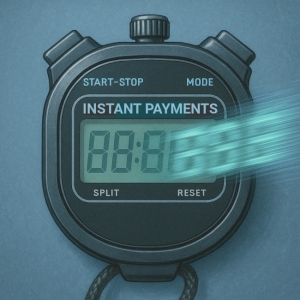
The difference is most obvious in speed. Timing studies by ResearchGate, FIS Global, and Visa show that tap-to-pay transactions are completed in approximately six to eight seconds, while chip inserts typically take 11 to 15 seconds. In some retail flows, tapping can be as fast as a single second compared with nearly 10 seconds for a dip.
That may not seem dramatic for one purchase, but in high-volume environments such as coffee shops, quick-service restaurants and transit gates, those seconds translate into shorter lines, faster service and more sales per hour. Consumers also appreciate the speed, which drives their growing preference for tap-to-pay.
Beyond speed, digital payments also deliver a smoother overall experience. Tokenization improves approval rates by reducing false declines, allowing customers to complete more purchases successfully on their first attempt. Stronger authentication through Face ID, Touch ID or passcodes provides a layer of protection against stolen-card fraud that static plastic can never match. Merchants also benefit: sensitive card data never touches their systems, reducing their compliance exposure and lowering both risk and cost.
The advantages also extend to accessibility and consistency. Phones and wearables enable quick, one-handed payments, which are particularly useful in drive-throughs or on transit systems. Whether a customer taps with a phone, a watch or even a contactless card, the process is uniform and reliable.
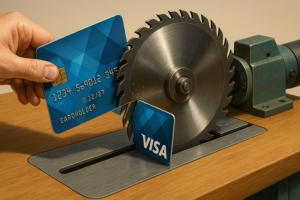
Perhaps most importantly, digital wallets align with consumer preferences, especially those of Gen Z. They don’t want to carry a physical wallet at all. Their vision of the future is one in which everything now stuffed into a leather wallet—payment cards, identification cards, loyalty cards—lives in a digital wallet. Other generations increasingly share this preference. The desire to go fully digital is not just a convenience; it’s an expectation of the future.
This combination of speed, security, and alignment with consumer behavior explains why digital payments are accelerating the decline of plastic, and why merchants who fail to enable them risk losing ground to competitors who deliver a faster, safer, and more seamless experience that digital makes possible.
Future: Fintech-driven Innovation
Where digital payments excel most is in the functionality enabled by the software layer on top, which allows fintechs to deliver innovative payment solutions. Wallets unify identity, loyalty and receipts; merchant apps blend ordering, rewards and promotions; and B2B workflows issue virtual cards to employee wallets in minutes, with policy controls attached.
Starbucks offers one of the clearest demonstrations of how digital payments unlock more than speed at the checkout line. With the app, customers tap to pay faster than inserting a card. They also order ahead, earn and track rewards automatically and receive personalized offers and promotions. The payment function becomes just one part of a broader, more engaging experience that builds loyalty and drives repeat visits.
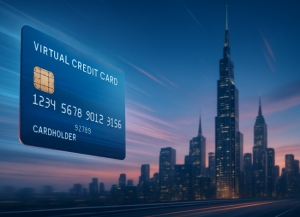
That same layering of services is exactly what fintechs are now bringing into the B2B world. By embedding payments into workflows, fintech apps can replicate what Starbucks achieved for coffee purchases, only at the scale of operational spend.
Virtual cards make this possible. They aren’t just substitutes for plastic; they are programmable tools. A finance team can issue a virtual card that works only for a designated purchase, expires after a week or applies only at an approved vendor. Just as Starbucks unifies ordering, rewards and payments in one app, virtual cards unify policy, control and transaction data into a single digital payment experience.
The result is transformative: Businesses gain faster, safer and more compliant purchasing, while employees enjoy the same ease and clarity they expect from consumer apps.
Digital payments outperform plastic across every critical dimension. They are faster at checkout, more convenient to carry, safer against fraud, and more functional as the hub for loyalty, identity, and tomorrow’s virtual cards.
Bottom line: The utility of plastic is diminishing as software-defined payments scale. With contactless now the dominant in-person behavior, mobile share growing in US consumer payments, merchant enablement accelerating and tokenization strengthening both security and conversion, the trajectory bends unmistakably toward digital-first. Physical cards will coexist for a time, but momentum, data and economics increasingly favor the phone or the watch over the physical wallet.
About the Author

John Toman is Co-founder and Chief Product Officer of Pivot Payables, a fintech company delivering corporate financial operations solutions. With a history of developing accounts payable automation and business-to-business payment solutions, Toman is a pioneer in applying AI, blockchain and virtual credit cards to improve financial operations. Toman writes about all things AP in his blog, “The Payables Guy.” He holds a BS from UCLA and an MBA from Pepperdine University.
Recent PaymentsNEXT posts:
AI Payments Are Coming Fast – But So Is Agentic Fraud
Attacking ERP Systems: The Next Frontier in B2B Payment Fraud

